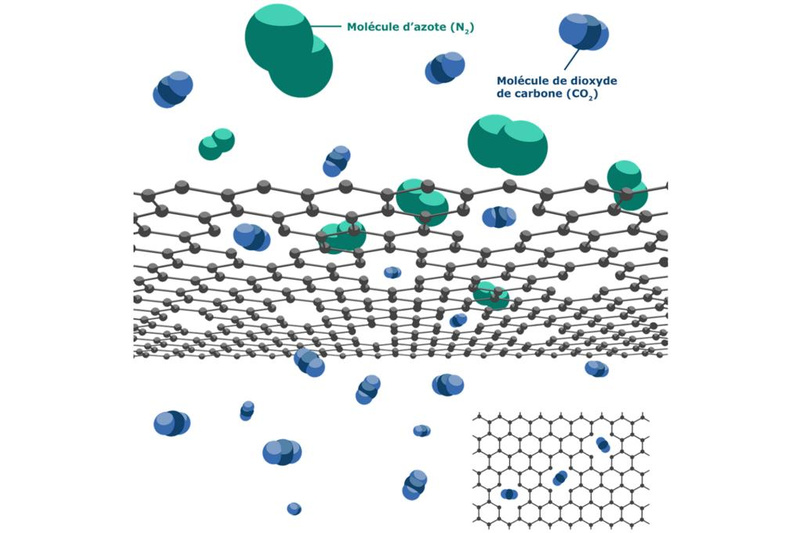

The plasma membrane forms a stable barrier separating the cell from its environment. Multiple proteins form clusters embedded into the membrane and carry out specific functions including the transport of molecules and cell-cell communication.
Scientists around Prof. Dr. Silvio Rizzoli from the Cluster of Excellence and the DFG Research Center Nanoscale Microscopy and Molecular Physiology of the Brain (CNMPB) at the University Medical Center Göttingen (UMG) now gained striking new insights into the general organization of the plasma membrane in living cells.
Membrane proteins are organized into heterogeneous long-lived clusters, termed protein assemblies. Within the assemblies, functionally related proteins show similar enrichment profiles probably forming functional subdomains. Key player for the formation and maintenance of the protein assemblies are cholesterol and the cytoskeletal element actin. Published in Nature Communications.
Original publication: Saka SK, Honigmann A, Eggeling C, Hell SW, Lang T, Rizzoli SO (2014) Multi-protein assemblies underlie the mesoscale organization of the plasma membrane. NAT COMMUN, 5: 4509.
Multi-protein assemblies in the plasma membrane tend to have patterned distributions rather than being randomly scattered. To investigate the mechanism behind this observation the team of Prof. Rizzoli in collaboration with scientists of the Max Planck Institute for Biophysical Chemistry in Göttingen and the LIMES Institute in Bonn performed a simultaneous investigation of all proteins in the plasma membrane of living cells. This was achieved by large-scale metabolic labeling of proteins in mammalian cells through extended incorporation of unnatural amino acid analogues, followed by fluorescent labeling.
This direct labeling approach was combined with super-resolution imaging with stimulated emission depletion (STED) microscopy. The resulting image was highly striking: a general mosaic-like pattern governs the protein organization at the plasma membrane. Multiple proteins were heterogeneously gathered into protein-rich domains, termed “protein assemblies”, surrounded by a protein-poor background.
The scientists further characterized these protein assemblies using a plethora of techniques and experimental strategies. Surprisingly, the assembly pattern was resistant to a variety of manipulations including the disruption of cytoskeletal elements, or the hydrolysis of phospholipids. However, depletion of cholesterol from the membrane caused almost complete elimination of the organization in reversible fashion, allowing the researchers to single out Cholesterol as the main molecular organizer of the protein assemblies.
The cytoskeletal element actin was identified as a secondary factor that borders the assemblies and prevents their coalescence. Many specific proteins were enriched in particular areas of the assemblies such as their edges or centers. Functionally related protein groups showed similar preferences in their enrichment profile, suggesting that functional protein-protein interactions create specialized subdomains within the assemblies.
The researchers therefore conclude that the assemblies constitute a fundamental principle of the membrane organization, which affects the nanoscale patterning of most membrane proteins, and possibly also their activity. Deciphering this fundamental membrane organization pattern and the responsible factors provides new insights for understanding the formation of specific signaling domains that are important in health and disease.
Prof. Dr. Silvio O. Rizzoli is head of the Department of Neuro- and Sensory Physiology of the University Medical Center Göttingen. He moreover is a member of the Cluster of Excellence and DFG Research Center for Nanoscale Microscopy and Molecular Physiology of the Brain (CNMPB) in Göttingen. His research focus includes the identification of molecular signal transduction processes between nerve cells. Prof. Rizzoli applies super-resolution microscopy techniques to study the transport and function of intracellular vesicles in the synapses of nerve cells. Recently, Prof. Rizzoli was awarded for his excellent work by the European Union with an “ERC Consolidator Grant”.
http://www.rizzoli-lab.de – Homepage der Arbeitsgruppe von Prof. Rizzoli
http://www.cnmpb.de – Exzellenzcluster und DFG-Forschungszentrum für Mikroskopie im Nanometerbereich und Molekularphysiologie des Gehirns (CNMPB)












